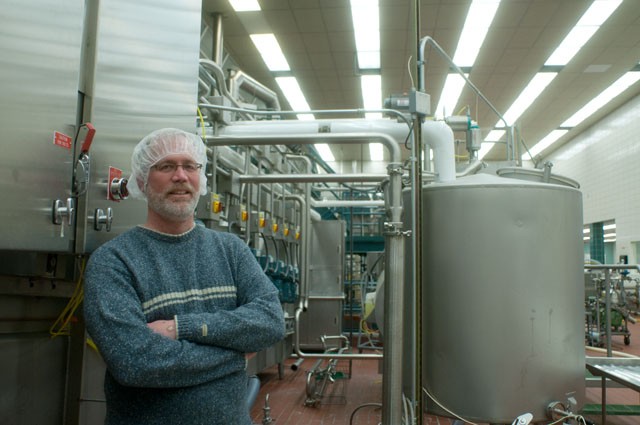In the world of food safety and protection, Tommy Thompson, the former U.S. Secretary of Health and Human Services, is often over-quoted. When the Secretary resigned in 2004, he famously said, âÄúFor the life of me, I cannot understand why the terrorists have not attacked our food supply because itâÄôs so easy to do.âÄù
ItâÄôs a quotation to which officials at the University of MinnesotaâÄôs National Center for Food Protection and Defense often refer when speaking about the possibility of the nation coming under a food attack.
ItâÄôs not âÄúifâÄù there will be an attack, itâÄôs âÄúwhen,âÄù the centerâÄôs director, Shaun Kennedy, said.
The NCFPD has been central to helping prepare the nation for an attack that officials say is sure to occur at some point.
Located within the College of Veterinary Medicine, the NCFPD was launched in 2004 as a Homeland Security Centers of Excellence âÄî a university-based program designed for multidisciplinary research and education surrounding homeland security issues. The NCFPD addresses the vulnerability of the nationâÄôs food system if an intentional attack by chemical or biological agents were to occur.
The success of the center depends largely on the partnership with industry and the involvement of graduate students and student researchers, Kennedy said.
âÄú[Food] attacks are not a new concept âĦ so itâÄôs not really a question of, âÄòWill there eventually be an attackâÄô âÄî there will,âÄù Kennedy said. âÄúItâÄôs, âÄòHow large-scale and what are we doing to minimize the consequences?âÄôâÄù
The NCFPD centers around five research âÄúbeamsâÄù âÄî agent behavior, event modeling, system strategies, risk communication and education âÄî that help researchers improve their ability to prevent and prepare for a possible attack.
The NCFPD has traditionally been involved in more common food outbreaks, such as salmonella in eggs or recalls.
Researching how to handle a smaller scale situation, such as a salmonella outbreak, helps the center create models and simulations to study to prepare for a national or global attack, said Dennis Degeneffe of the Food Industry Center, which is sponsored by the NCFPD.
There are many ways an attack to a farm could reach all the way to the consumer, Degeneffe said. Examples could include the contamination of bulk storage tanks, food transportation systems or even stores.
While researchers agree that the threat level is âÄúnot at zero,âÄù it is safe to say that the nation is better prepared than it was 10 years ago, said Joseph Scimeca, senior director of global regulatory and scientific affairs with Cargill Inc.
Scimeca leads the Industry Workgroup for the NCFPD, which is made up of food industry officials and public health leaders who offer their expertise, guidance and feedback.
The ability to bring together businesses that would otherwise be competitors is very unique, Scimeca said.
âÄúWe have companies like McDonalds and Burger King, Wal-Mart and Target,âÄù he said, âÄúand thatâÄôs the reason why we have been successful.âÄù

Image by Jason Kopp
Shaun Kennedy, Director of the National Center for Food Protection and Defense (NCFPD), a Department of Homeland Security Center of Excellence, is a leader in national food safety and food defense research. Research and food security education takes place within the Andrew Boss Lab of Meat Science on the St. Paul Campus.
U helps prepare for food attacks
A U department addresses the vulnerability of U.S. food production.
by Ashley Bray
Published December 13, 2010
0
More to Discover







